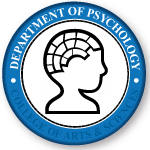Author ORCID Identifier
Reiter-Palmon https://orcid.org/0000-0001-8259-4516
Karwowski https://orcid.org/0000-0001-6974-1673
Document Type
Article
Publication Date
2-1-2019
Publication Title
Psychology of Aesthetics, Creativity, and the Arts
Volume
13
Issue
1
First Page
36
Last Page
48
Abstract
Previous studies on creative mindsets have demonstrated that people do not necessarily conceptualize creativity as either fixed (unchangeable) or malleable (able to be grown) but instead use both terms while describing creative behaviors and traits. Because people can see creative ability as both a fixed and malleable trait, this seemingly contradictory view may stem from the fact that people use information about different components and levels of creative expertise when making that judgment. Here, by integrating variable- and person-centered approaches to studying creative mindsets, we aimed to provide a more authoritative answer to this issue. A large sample (N = 3,876) of Polish adults completed the Creative Mindset Scale, with smaller subsamples also completing different measures of creative self-concept, creative ability, creative activity, and creative achievement. A series of confirmatory and exploratory factor analyses confirmed that the 2-factor model, with correlated yet relatively independent fixed and growth creative mindsets, fit the data better than did the general factor model, in which fixed and malleable mindsets are seen as being on a continuum. We found that although the better fit of the 2-factor model demonstrated that people indeed describe creativity in both fixed and malleable ways, the general factor orientation may shape their perception as well. A latent profile analysis revealed the existence of 4 classes of people: those holding high growth and low fixed mindsets and those holding low growth and high fixed mindsets but also those holding high growth and high fixed mindsets as well as those holding low fixed and malleable mindsets. The high growth−high fixed type was characterized by the highest creative self-concept (especially creative self-efficacy and creative personal identity), average activity and achievement, and relatively low creative ability. We discuss these findings in terms of creative mindsets theory and propose further research areas.
Recommended Citation
24. Karwowski, M., Royston*, R., & Reiter-Palmon, R. (2019). Exploring creative mindsets: Variable and person-centered approaches. The Psychology of Aesthetics, Creativity, and the Arts, 13(1), 36-48. https://doi.org/10.1037/aca0000170


Comments
©American Psychological Association, [2019]. This paper is not the copy of record and may not exactly replicate the authoritative document published in the APA journal. The final article is available, upon publication, at: http://dx.doi.org.leo.lib.unomaha.edu/10.1037/aca0000170